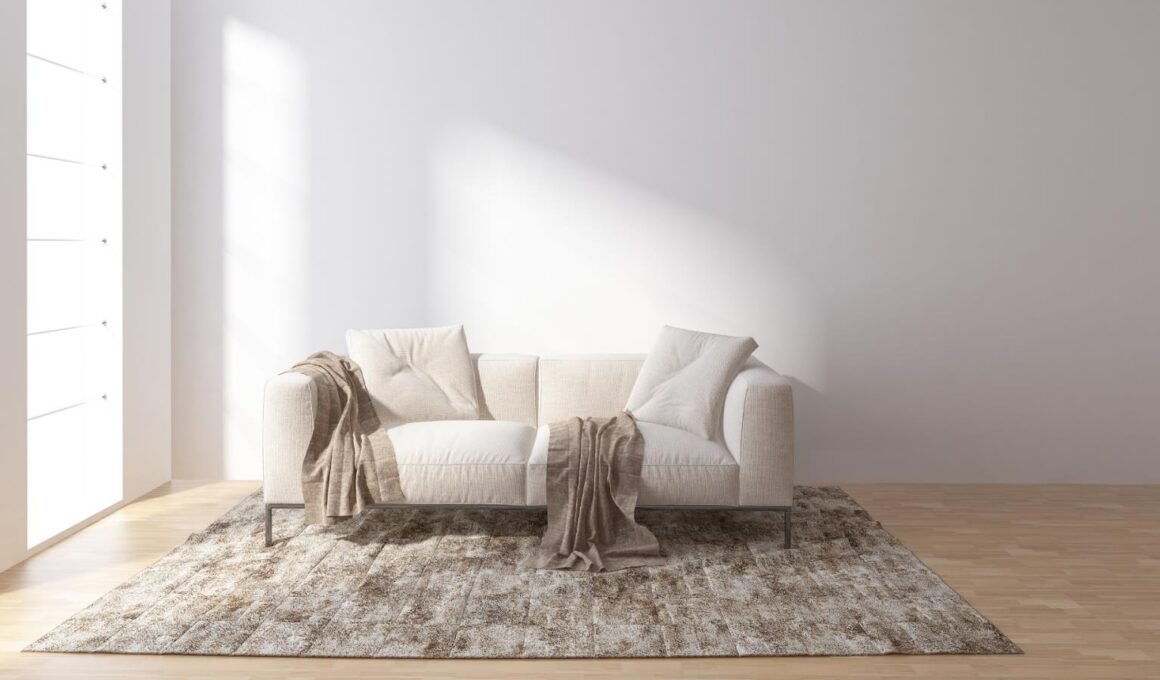Moving furniture around your home can feel overwhelming, especially when you’re trying to figure out where that beautiful rug should go. You’re not alone in this struggle – many homeowners find themselves staring at empty floors, wondering how to make their space feel complete. Rugs are more than just floor coverings; they’re an essential element of interior design that can significantly impact the ambiance and comfort of a room. The good news? With a few simple tricks, you can transform any layout into a cohesive, stylish space that feels intentionally designed.
Understanding Your Space Layout
Before diving into specific placement techniques, it’s crucial to assess your room’s unique characteristics. Every layout presents different opportunities and challenges that’ll influence your rug placement tips.
Open Concept Challenges
Open floor plans can feel overwhelming when you’re trying to create defined spaces. The key is using rugs to establish boundaries without physical walls. Position your rug to anchor major furniture groupings, creating intimate conversation areas within the larger space.
Consider the flow between areas – you don’t want your rug to interrupt natural pathways. Instead, let it guide movement while clearly defining where one “room” ends and another begins.
Traditional Room Divisions
Rooms with clear boundaries offer more straightforward placement options. Here, you can focus on how to place a rug in a living room by centering it within the available floor space, ensuring it complements rather than competes with architectural features.
Standard rectangular rooms typically work best with rectangular rugs, but don’t be afraid to experiment with round options for softening sharp corners or creating unexpected focal points.
Small Space Solutions
Compact rooms require strategic thinking about scale and proportion. A common mistake is choosing rugs that are too small, which can make the space feel choppy and disconnected.
In smaller areas, consider going larger than you initially think. A rug that extends under most furniture pieces will actually make the room appear more spacious by creating visual continuity.
Moving into placement strategies, let’s explore the fundamental techniques that work across all layout types.
Essential Rug Placement Strategies
These time-tested approaches will help you achieve professional-looking results regardless of your room’s shape or size. Master these basics, and you’ll have the foundation for successful area rug styling.
The Front Legs Rule
This guideline suggests placing at least the front legs of your main seating pieces on the rug. It’s not a hard rule, but it creates a grounded, cohesive look that feels intentional rather than random.
For sofas and chairs, having the front legs on the rug while back legs remain on the floor creates a nice balance. This technique works particularly well in medium-sized rooms where a full-furniture placement might feel overwhelming.
Room Anchoring Techniques
Think of your rug as an anchor that holds your furniture arrangement together. It should feel substantial enough to support the visual weight of your pieces without disappearing beneath them.
The rug doesn’t need to be perfectly centered in the room – instead, center it within your furniture grouping. This creates a more intimate, purposeful feeling than simply placing it in the geometric center of the space.
Creating Visual Zones
Decorative rug ideas often involve using multiple rugs to define different functional areas. In open concepts, this might mean one rug for the seating area and another for the dining space.
Ensure there’s enough visual breathing room between rugs – typically 18-24 inches of bare floor helps prevent the space from feeling cluttered or confused.
The next consideration involves selecting the right size and style for your specific needs.
Size and Style Considerations
Getting the proportions right is often the difference between a space that feels professionally designed and one that seems haphazard. These guidelines will help you make confident choices about interior design rugs.
Measuring Your Space
Start by measuring your furniture arrangement rather than just the room dimensions. You’ll want your rug to extend beyond your furniture grouping by roughly 12-18 inches on all sides for a balanced look.
How to choose area rugs becomes much easier when you have actual measurements rather than guesswork. Use painter’s tape to outline potential rug sizes on your floor before making a purchase.
Color and Pattern Selection
Neutral rugs offer the most flexibility and longevity, but don’t shy away from patterns if they speak to you. Bold patterns work best in rooms with simpler furniture, while busy spaces benefit from solid or subtly patterned rugs.
Consider your room’s natural light when selecting colors. Darker rugs can feel grounding and sophisticated, while lighter options help reflect light in dimmer spaces.
Layering Techniques
Layering rugs adds depth and visual interest, particularly in casual or eclectic spaces. Start with a larger, neutral base rug and add a smaller patterned piece on top.
This technique works especially well in bedrooms, where you might layer a smaller decorative rug over a larger natural fiber piece for both comfort and style.
Understanding what doesn’t work is just as important as knowing what does.
Common Mistakes to Avoid
Even experienced decorators can fall into these traps, but awareness helps you sidestep the most frequent pitfalls in rug placement.
The Too-Small Trap
Perhaps the most common error is choosing a rug that’s too small for the space. This creates a disconnected, floating effect that makes furniture look awkward and unsupported.
When in doubt, go larger. A rug that’s slightly too big will look intentional, while one that’s too small will always appear like a mistake.
Wrong Shape Choices
Round rugs work beautifully in square rooms or under round tables, but they can feel awkward in long, narrow spaces. Similarly, rectangular rugs in perfectly square rooms might emphasize the room’s boxy proportions.
Consider your room’s natural shape and choose a rug that complements rather than fights against it.
Poor Traffic Flow
Rugs should guide movement through a space, not impede it. Avoid placing rugs in high-traffic walkways where they’ll create tripping hazards or get excessive wear.
Think about how people naturally move through your space and position rugs to support, not interrupt, these patterns.
Your Rug Placement Questions Answered
Can I use multiple rugs in one room?
Yes! Layer different sizes or use separate rugs to define distinct areas, just ensure they complement each other visually.
Should my rug match my furniture exactly?
Not necessarily. Rugs should coordinate with your overall color scheme but don’t need to match furniture precisely.
How do I know if my rug is too small?
If furniture appears to be floating or the rug looks like an afterthought, it’s probably too small for the space.
Bringing It All Together
Rug placement tips don’t have to be complicated or intimidating. Start with these fundamental principles, trust your instincts, and remember that rules are meant to be guidelines, not absolute laws.
The most important thing is creating a space that feels comfortable and reflects your personal style. With practice, you’ll develop an eye for what works in your specific home, and placing rugs will become second nature rather than a source of stress.



